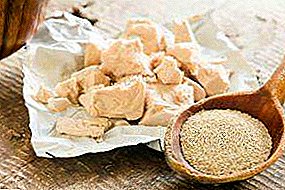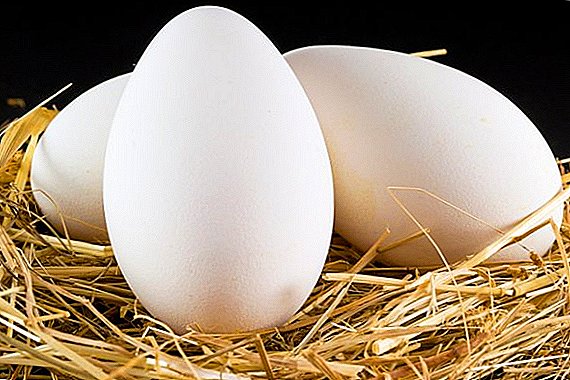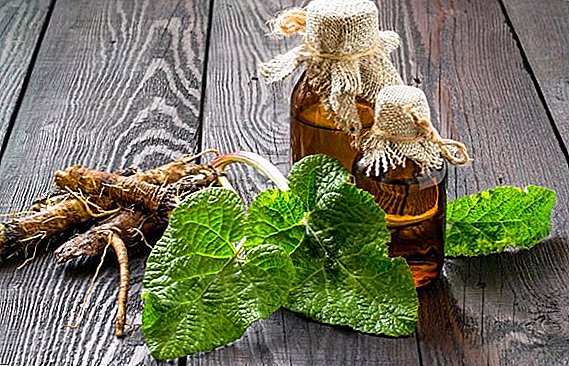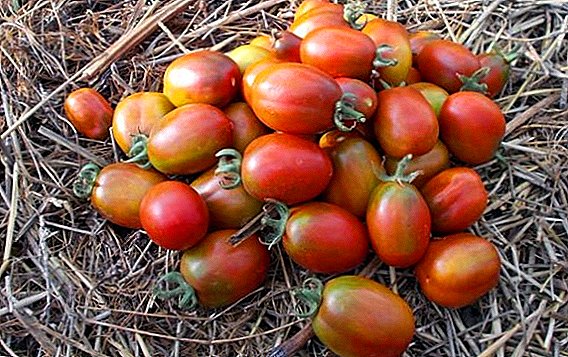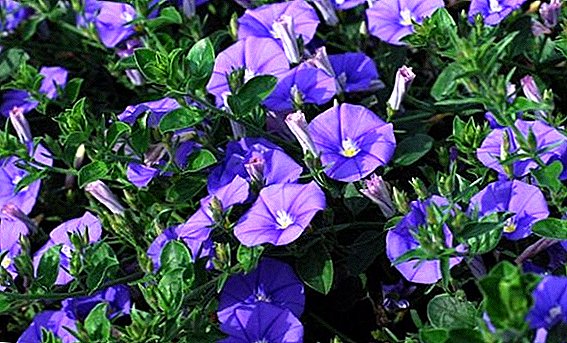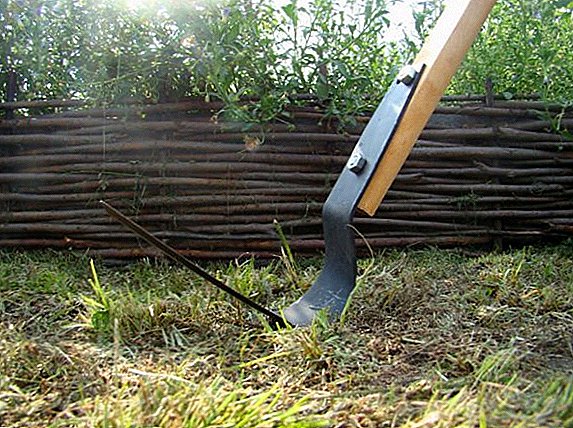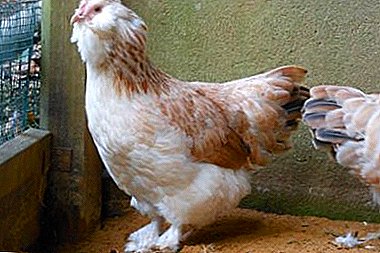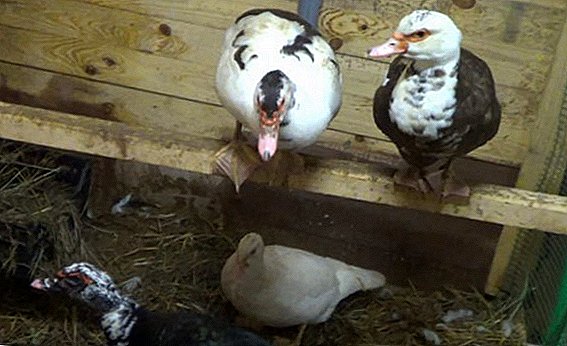 Lilac is a flowering shrub with lush clusters of delicate flowers, pleasing no less delicate and delicate aroma. This plant is well prone to pruning, which allows you to decorate the site and single decorative forms, and groups, and even living fences.
Lilac is a flowering shrub with lush clusters of delicate flowers, pleasing no less delicate and delicate aroma. This plant is well prone to pruning, which allows you to decorate the site and single decorative forms, and groups, and even living fences.
Where to plant a lilac
The best conditions for lilacs are as follows: flat place; the soil is moistened, with good drainage and indicators of acidity, close to neutral; the passage of groundwater at least one and a half meters from the surface; sun lighting most of the day; shelter from drafts. Lilac does not grow in swampy or frequently flooded areas. In these cases, if there is no other possibility, it is planted on hills piled up following the example of an alpine slide.
 Sour soil before planting must be treated with lime or dolomite flour. Lilac tolerates partial shade, and in the shade it weakens, slows growth and development, blooms poorly and not abundantly. But on the illuminated place - it is a bright shrub with lush greens, strong shoots and many inflorescences.
Sour soil before planting must be treated with lime or dolomite flour. Lilac tolerates partial shade, and in the shade it weakens, slows growth and development, blooms poorly and not abundantly. But on the illuminated place - it is a bright shrub with lush greens, strong shoots and many inflorescences.
In areas open to wind, especially in the cold season, lilac buds freeze, which affects flowering. Pick up for planting a warm sunny place, sheltered from the wind, for example, among perennial tall plants.
When and how to plant a lilac
Lilac is well acclimatized, all that it needs is compliance with the landing conditions, healthy planting material and attentive care.
Did you know? Once upon a time, the ancient Greek goat-like god Pan, kindled with feelings for the nymph Siringe. The beautiful woman, frightened, ran away without replying to Pan's sympathy. Running away from Pan, who was chasing her, Syringa stopped at the river that blocked her path. She appealed to the help of the river god, and he turned it into a lush bush with delicate lilac flowers. Since then, the lilac is called the name of the beautiful nymph.
The optimal time for planting shrubs
The best time to plant a lilac is August-September. During this period, seedlings have time to take root until frost. Plant a plant in the evening or on an overcast day. Possible landing in the spring before the awakening of the kidneys. In this case, you need to prepare the ground for planting in the fall.
How to choose planting material
The solution to the question: how to dissolve the lilac on the plot, begins with the selection of a seedling A lilac sapling should have green leaves, well-branched root system with densely growing thin roots.
 The best age for a sapling is 2-3 years, the plant can be grafted and own-rooted, and the growth of a sapling is from 50 to 70 cm, the diameter of the root lobe is about 30 cm. Such plants tolerate transplant more easily and root more easily, their root system is less traumatized. Consider this for the future, when you dig up your own seedlings: the roots cannot be damaged, the seedling is dug with a clod of earth.
The best age for a sapling is 2-3 years, the plant can be grafted and own-rooted, and the growth of a sapling is from 50 to 70 cm, the diameter of the root lobe is about 30 cm. Such plants tolerate transplant more easily and root more easily, their root system is less traumatized. Consider this for the future, when you dig up your own seedlings: the roots cannot be damaged, the seedling is dug with a clod of earth.
Lilac planting pattern
When planting, for a start, deal with the pit for the seedling: in fertile soil, the depth of the pit is equal to the length of the roots (up to 30 cm), on poor soils, the pit has a size of meter per meter. Lay drainage at the bottom of the pit (fragments of brick, large pebbles), fertilize with soil mixed with humus (15 kg), wood ash (200 g), superphosphate (30 g).
Further, the distance between the bushes depends on the form of landing. If you are planning a single landing, make a distance of 2 m, for a group - one and a half, and for a hedge a distance of one meter is permissible.
 Plant the bush, straighten the roots, leave the root neck at ground level, if you do not want a lot of root growth to develop, 2 cm above the ground level. If you plan to propagate overgrown - on the contrary, deepen the root neck. Powder the seedling with soil, compact around the trunk and pour. After the soil absorbs water, mulch with peat or other material.
Plant the bush, straighten the roots, leave the root neck at ground level, if you do not want a lot of root growth to develop, 2 cm above the ground level. If you plan to propagate overgrown - on the contrary, deepen the root neck. Powder the seedling with soil, compact around the trunk and pour. After the soil absorbs water, mulch with peat or other material.
How and what to feed the lilac
If at planting the soil was well fertilized, fertilizing in the first 2-3 years is not needed. Further, to stimulate the growth, top dressing of lilac is carried out in the spring with nitrogen compounds, for better flowering - with phosphate ones. Once every 2 years they feed with potash fertilizers after flowering.
Important! Nitrogen fertilizers are contraindicated in the second part of the growing season. You can not overdo it with nitrogen: lilac blooms worse, more sprouts that do not have time to get stronger and freeze slightly in the winter.Do not abuse the organic nitrogen fertilizer for lilac in the spring: manure, chicken droppings - this will also affect flowering. Watering lilacs needed in the first year after planting for a good survival of seedlings. Adult bushes are watered only during dry periods.
The rules of cutting lilac, whether to cut it
To keep the bushes neat and elegant, pruning lilacs is necessary. When fading, lilac partially loses its appeal. By nature, the bush shoots grow too fast and a little sloppy: in all directions, thickening strongly.
When lilac pruning is needed
 The optimal time - the period before the beginning of the movement of juices along the branches - is early spring. In the summer, only damaged or useless shoots are removed. When to prune the lilac, tell the calendar: in the summer, pruning results can be used as cuttings or grafts. After the flowering period, dry buds are carefully removed, try not to damage the leaves. Broken and dried branches can be removed from the bush during the entire period of development - flowering. Grafted plants are cleaned, mainly from abundant wild growth.
The optimal time - the period before the beginning of the movement of juices along the branches - is early spring. In the summer, only damaged or useless shoots are removed. When to prune the lilac, tell the calendar: in the summer, pruning results can be used as cuttings or grafts. After the flowering period, dry buds are carefully removed, try not to damage the leaves. Broken and dried branches can be removed from the bush during the entire period of development - flowering. Grafted plants are cleaned, mainly from abundant wild growth.
Attention! It is not recommended to form lilac bushes in autumn - in winter, the branch that does not heal from cutting will freeze.
How to trim correctly
Forming a bush "under the natural" will look good against a background of rustic style in the garden. To form such a crown, create a base. The bush is formed from 3 - 4 stem branches, removing in the first year all crookedly growing and directed inward branches. If 2 approximately the same development branches are formed, which grow crosswise, one of them, the weaker one, is removed. The branches of the base are shortened by half the length, leaving buds oriented towards the growth direction of future branches.
 In the second year, all the branches that have grown inside the bush are pruned, annual shoots are cut to the buds, from which the shoots forming the shape will grow. The main task this year is to evenly grow a crown, without voids and chaotic directions. Once this is done, trimming is stopped. Next, you need to maintain shape, sometimes removing damaged or growing inside the branches, unnecessary shoots.
In the second year, all the branches that have grown inside the bush are pruned, annual shoots are cut to the buds, from which the shoots forming the shape will grow. The main task this year is to evenly grow a crown, without voids and chaotic directions. Once this is done, trimming is stopped. Next, you need to maintain shape, sometimes removing damaged or growing inside the branches, unnecessary shoots.
If there are many bushes, the shaping can be made easier. The first couple of years to give the bush to grow freely, and then cut off all the weak, interfering with each other shoots, leaving strong. After flowering, you can neatly shorten the branches so that everyone looks the same.
To form a lilac in the form of a tree — a trunk — an annual bush is shortened at a height of a trunk, leaving 3-4 buds. Shoots that grow from these buds form just like a bush, laying the foundation of the crown. Next you need to cut off all the shoots in the area of the trunk and thin out the crown.
Lilac reproduction
There are several ways to propagate lilac. Having understood them, each gardener will choose for himself more suitable.
Interesting! Elizabeth I Tudor, Queen of England and Ireland, was delighted with the gift of the Austrian emperor. An Austrian autocrat brought a purple bush from Istanbul. Lilac has become one of the queen's favorite flowers.
Seeds
 Seed collection occurs at the end of autumn in wet weather, so that the seeds do not accidentally wake up. The seed pods are dried for several days, shake the seeds out of them, removing the garbage.
Seed collection occurs at the end of autumn in wet weather, so that the seeds do not accidentally wake up. The seed pods are dried for several days, shake the seeds out of them, removing the garbage.
Seeds need to be stratified: pour in wet sand, fall asleep in a container with holes at the bottom and send for 2 months to a room with a temperature of 0 to 5 degrees Celsius. In March, they are sown in a box with steamed soil (for the prevention of diseases). Depending on the variety, shoots appear after 10 days or 2-3 months.
When the second pair of leaves is formed, the sprouts swoop into the seedling boxes at a distance of 3 cm. They are planted in open ground in the month of May. You can sow under the winter snowy crust. Seeds are buried 1.5 cm in the ground, and in the spring they swoop into boxes and grow.
Cuttings
Lilac cuttings with lignified shoots does not produce results, it is rather an exception to the rules. Consider breeding green shoots. Harvest cuttings at the beginning of flowering. The stalk should have 1 internodes and 2 buds. The lower cut is done, departing 1 cm from the bud, the leaves are removed. For better rooting before planting, treat with a growth stimulator. Plant to a depth of 1 cm.
 Reproduction of lilac cuttings in the spring is also possible at home: rooting can be carried out in a container with a transparent lid. To do this, prepare a nutritious soil and coarse sand. The temperature should be maintained within 25-28 degrees of heat. Daily spray the sprouts from the sprayer with water. A month later, the roots are formed, and in the fall you can land on the ground in the ground, protecting from freezing.
Reproduction of lilac cuttings in the spring is also possible at home: rooting can be carried out in a container with a transparent lid. To do this, prepare a nutritious soil and coarse sand. The temperature should be maintained within 25-28 degrees of heat. Daily spray the sprouts from the sprayer with water. A month later, the roots are formed, and in the fall you can land on the ground in the ground, protecting from freezing.
Root shoots
The first seedlings are separated at the beginning of June before the shoot sprouting. Before separating, the soil around the donor bush should be moistened. Since the roots are still weak, conduct the procedure on an overcast day so that they do not dry out. The length of the roots should be 3-5 cm. At the bottom of the picking box, put wet sand or peat, plant seedlings there and sprinkle with water. Then land in a cold greenhouse at a distance of 5 cm.
The first 7 days the plants are under the film and sprayed twice a day. Then the film is removed, and watering occurs as needed. The optimal growing period is two growing periods. Then the bushes are planted in a permanent place. Care is to maintain the soil moisture and thin out if necessary. Soil pristvolnyh circles mulch.
Mass flowering of such bushes begins at 5-7 years of age. Despite the late flowering, this method of reproduction gives the bush longevity.
Inoculation
There are several methods of vaccination, let's talk about the most common of them.
Copulation is a method where the graft tissue and the stock are most closely aligned. Stocks and scion shoots should be of the same thickness. Copulation is carried out at the root collar in the stem at the selected height and in the crown. Each branch of the skeleton is grafted separately. With proper performance of actions in 2.5 months the scion grows together.
 Copulation is simple, or oblique cut is carried out before the onset of sap flow. The cutting is cut at an angle of 45 degrees to 2 cm in length, a cut of the stock also. Graft pressed to the rootstock and tightly tied.
Copulation is simple, or oblique cut is carried out before the onset of sap flow. The cutting is cut at an angle of 45 degrees to 2 cm in length, a cut of the stock also. Graft pressed to the rootstock and tightly tied.
English copulation. The sections are made at an angle of 45 degrees to the longitudinal axis of the branches. To increase the area of contact and to connect the scion and stock more closely and firmly, longitudinal cuts are made in both sections.
Successful vaccination depends on weather conditions. In hot summer with a minimum amount of precipitation the rootstocks are watered a few days before the inoculation. Planted and grafted plants require frequent loosening and watering, mulching. Graft bushes, reaching the growth, it is desirable to tie up to the pegs. Proper planting and attentive care of lilacs will fill your site with delicate fragrance and lush purple or white.


